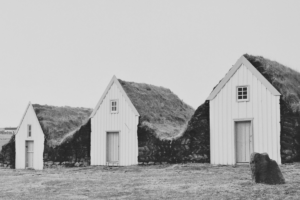The Struggle of Dwelling
 “Mary knew movement, uninvited but necessary for survival. Mary knew fleeing and looking over her shoulder and thirsting for safety and vigilantly watching for danger. And with it all, trusting in God.”[1] In his recent delivery of the Bampton Lectures, the theologian Willie Jennings offers an imaginative look at how Jesus, through Mary and Joseph, entered the struggle of dwelling. I say struggle because the remainder of Jesus’s life and ministry proved to be painfully itinerated. Mary would guide him in what it meant to inhabit a place, but not without the indelible mark of the fragility of home. Through such tutelage, Jesus developed an acute attentiveness to place—a type of attentiveness that acknowledges the land and animals, seeds and seasons, stories and souls. “Foxes have holes, and birds of the air have nests; but the Son of Man has nowhere to lay his head” (Matthew 8:20). Stripped from his native dwelling, this becomes the narrative backdrop for his learning how to dwell.
“Mary knew movement, uninvited but necessary for survival. Mary knew fleeing and looking over her shoulder and thirsting for safety and vigilantly watching for danger. And with it all, trusting in God.”[1] In his recent delivery of the Bampton Lectures, the theologian Willie Jennings offers an imaginative look at how Jesus, through Mary and Joseph, entered the struggle of dwelling. I say struggle because the remainder of Jesus’s life and ministry proved to be painfully itinerated. Mary would guide him in what it meant to inhabit a place, but not without the indelible mark of the fragility of home. Through such tutelage, Jesus developed an acute attentiveness to place—a type of attentiveness that acknowledges the land and animals, seeds and seasons, stories and souls. “Foxes have holes, and birds of the air have nests; but the Son of Man has nowhere to lay his head” (Matthew 8:20). Stripped from his native dwelling, this becomes the narrative backdrop for his learning how to dwell.
Hope in Displacement
This undeniably influential aspect of Jesus’ life makes him a faithful companion for those who experience all types of displacement. The Holy Family represents hope and deliverance through divine providence for those who seek refuge and flee for their lives. For those who immigrate seeking a better life or sojourn to escape calamity, we find in Jesus one familiar with the trek through foreign lands and the redemption made possible from a new habitation. For many migrants and refugees, this story becomes their story.
Fear and the Holy Family
We could say that fear led the Holy Family to seek asylum. Mary and Joseph feared for their son’s life. And Herod feared the threat represented by the child. Herod inhabited a built world of power, clearly defined positions of authority, and demarcated jurisdiction. Jesus entered that built world, into a narrative threatened by his very existence. Fear, narrative, and built environments made into the materials of this conflict and impressed his body. This is important to state in the context of immigration and refugee debates.
Suppose conflict is two ideas trying to inhabit the same place.[2] In that case, we might define the conflict of immigrants and refugees as two people trying to inhabit the same place. Inevitably, our perspective will be shaped by the materials of this conflict: fear, narratives, and the built environments we inherit. As Jennings would say, dwelling well requires us to look intently at our habitation, just like Jesus, if we are to imagine the possibility of symbiosis—a redeemed dwelling in the places we share with another.
[1] 2023 Bampton Lectures
[2] From a lecture by Dr. David Anderson Hooker, a leading figure in discussions of faith and conflict.

